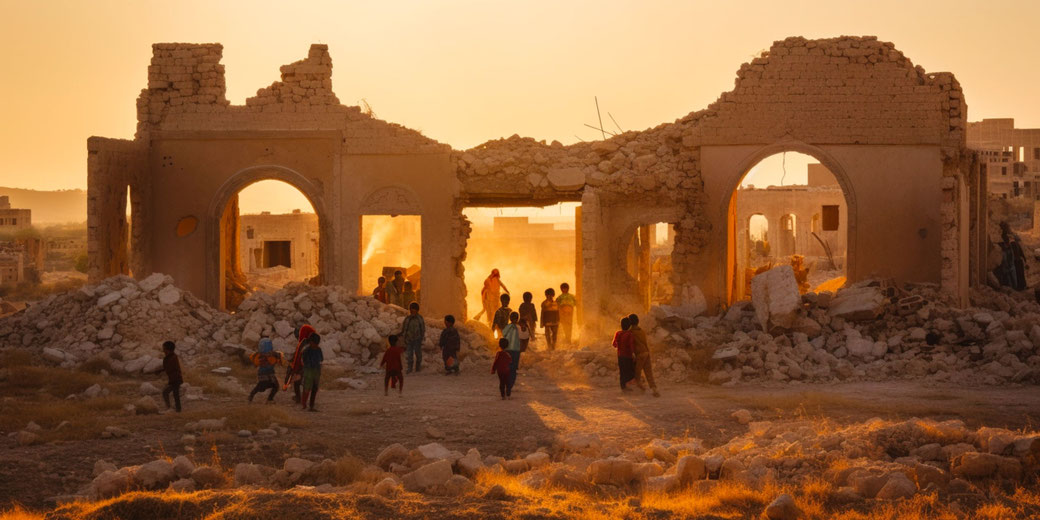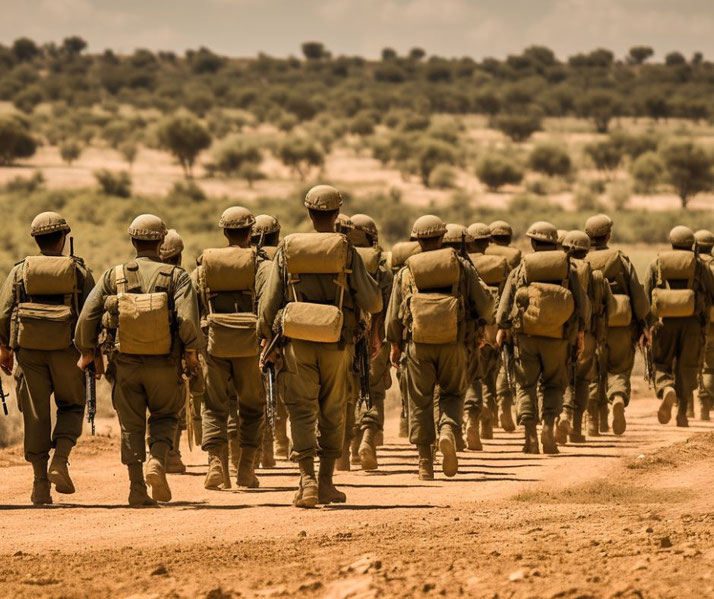Understanding the 1948 Israeli-Arab War

The 1948 Palestine war, often referred to as the Israeli War of Independence or the Nakba, remains one of the most pivotal events in Middle Eastern history.
This conflict, which erupted in the wake of the United Nations' decision to partition Palestine, led to the establishment of the State of Israel and the displacement of hundreds of thousands of Palestinians.
The war's roots can be traced back to competing nationalist movements, Zionist and Arab, each vying for control and self-determination in a land both considered their own.
What caused the 1948 Palestine War?
The 1948 Palestine war can be traced back to the late 19th and early 20th centuries when the Zionist movement, advocating for a national homeland for the Jewish people in Palestine, began to gain momentum.
This aspiration was bolstered by the Balfour Declaration of November 2, 1917, in which the British government expressed support for the establishment of a "national home for the Jewish people" in Palestine.
However, this promise was made without consulting the Arab majority living in the region, leading to tensions and resentment.
Following World War I, the League of Nations granted Britain the mandate to govern Palestine in 1920.
Under British administration, Jewish immigration to Palestine increased, especially in the 1930s as Jews fled antisemitic persecution in Europe.
This influx intensified land disputes and competition for resources, which exacerbated tensions between Jewish immigrants and the Arab population.
By the 1940s, the situation had become untenable. The Arab Revolt of 1936-1939 was a significant uprising against British rule and Jewish immigration.
In response to the growing unrest and after World War II, Britain referred the issue of Palestine to the United Nations in 1947.
On November 29, 1947, the UN General Assembly adopted Resolution 181, recommending the partition of Palestine into separate Jewish and Arab states, with Jerusalem under international administration.
While the Jewish leadership accepted the partition plan, the Arab leadership, both within Palestine and in the surrounding countries, rejected it.
First phase of the War (Nov 1947 - May 1948)
The first phase began immediately after the UN's partition resolution on November 29, 1947, and lasted until the official establishment of the State of Israel on May 14, 1948.
During this period, the conflict was primarily a civil war between Jewish and Arab communities within Palestine.
Tensions that had been simmering for decades erupted into violence, with both sides launching attacks and counterattacks.
Key events of this phase include the Deir Yassin massacre by Jewish forces in April 1948, and the Arab attack on a medical convoy to Hadassah Hospital in Jerusalem, also in April 1948.
As British forces began their withdrawal, the power vacuum intensified the conflict, with both sides seeking to gain control over key strategic areas.
One of the most significant confrontations was the Battle of Jerusalem. The city, with its religious and strategic importance, became a focal point of the conflict.
Both Jewish and Arab forces engaged in intense combat, with the Jewish quarter of the Old City facing a severe siege.
The road to Jerusalem was a lifeline, and its control was vital. Despite numerous attempts, Israeli forces couldn't break the Arab blockade at Latrun, leading them to construct an alternative route, known as the "Burma Road", to supply the city.
Operation Nachshon, launched in April 1948, was one of the first major offensives by the Haganah, the primary Jewish defense force.
Its objective was to break the siege of Jerusalem by securing the road from Tel Aviv.
The operation saw successes, with several villages being captured, easing the blockade on Jerusalem temporarily.

Second phase of the war (May 1948 - 1949)
The second phase commenced with the declaration of the State of Israel on May 14, 1948.
Almost immediately, neighboring Arab states, including Egypt, Jordan, Syria, and Iraq, intervened, launching a military invasion into the newly declared state.
This phase saw conventional warfare, with organized armies clashing on multiple fronts.
In July 1948, Israeli forces initiated Operation Dani with the aim of capturing territory in the central region of the country.
The operation resulted in the capture of the towns of Lydda (now Lod) and Ramla.
These towns were of strategic importance due to their location near the main road connecting Tel Aviv to Jerusalem.
The operation led to a significant number of Palestinian Arabs being displaced from these areas.
Another pivotal operation was Operation Yoav in October 1948, targeting the southern front.
The goal was to break the Egyptian blockade and open the road to the Negev desert.
The operation was largely successful, leading to the capture of the city of Beersheba and creating a corridor to the Negev, allowing Israeli forces to link up with Jewish settlements there.
The war saw multiple ceasefires, often followed by renewed fighting.
The long-term consequences of the war
The war concluded with a series of armistice agreements in 1949, negotiated separately between Israel and each of the invading countries: Egypt, Jordan, Lebanon, and Syria.
These agreements, particularly the one with Jordan, which formalized the division of Jerusalem and the control of the West Bank, set the stage for the geopolitical realities that persist today.
By the time the final armistice was signed in 1949, Israel had managed to expand its territory beyond the original partition plan, while Transjordan retained control of the West Bank and Egypt held the Gaza Strip.
However, the establishment of Israel came at a significant cost for the Palestinian Arab population.
A major consequence of the war was the Palestinian refugee crisis. Estimates suggest that between 700,000 and 800,000 Palestinians either fled or were expelled from their homes during the conflict.
These refugees found themselves in camps in the West Bank, Gaza Strip, Jordan, Lebanon, and Syria.
The question of their right to return or be compensated remains one of the most contentious issues in the Israeli-Palestinian conflict.

Another significant outcome was the geopolitical division of the region. The West Bank, including East Jerusalem, came under Jordanian control, while the Gaza Strip was governed by Egypt.
Jerusalem, a city of immense religious and cultural significance, was divided, with Israel controlling the western part and Jordan the eastern.
This division lasted until 1967 when Israel captured the West Bank and Gaza Strip during the Six-Day War.
The war also set the stage for a prolonged conflict between Israel and its Arab neighbors.
The refusal of many Arab states to recognize Israel, combined with the unresolved status of Palestinian refugees, meant that tensions remained high.
Contestable narratives about the war
The 1948 Palestine war, given its profound implications and the emotions it evokes, has been the subject of extensive research, analysis, and debate.
Several controversies and historiographical debates have emerged over the years, challenging established narratives and offering new perspectives on the events of 1948.
One of the central debates revolves around the causes of the Palestinian refugee crisis.
Traditional Israeli narratives argued that the majority of Palestinian Arabs fled their homes voluntarily, heeding calls from Arab leaders to clear the way for incoming Arab armies.
However, research by various historians, including Israeli 'New Historians' like Benny Morris and Ilan Pappé, has shown that while some Palestinians did leave due to such calls, many were either directly expelled by Israeli forces or fled due to fear of combat, atrocities, and massacres.
The extent and nature of these expulsions remain a point of contention.
Another area of debate concerns the intentions and strategies of the Arab states that intervened in the conflict.
While the dominant narrative suggests a coordinated Arab effort to "drive the Jews into the sea", some historians argue that the Arab states had varied motivations, with some more interested in territorial gains than in preventing the establishment of Israel.
The lack of coordination and rivalry among Arab states, particularly between Transjordan and Egypt, is a topic of exploration in this context.
The portrayal of the war in education and public memory is a further area of contention.
How the events of 1948 are taught in Israeli and Palestinian schools, and the narratives perpetuated in public commemorations, have been subjects of study and criticism.
The balance between nationalistic education and a more nuanced understanding of history is a challenge faced by both communities.
Lastly, the use of archival material and oral histories has sparked debates about methodology and historical authenticity.
The opening of Israeli archives in the 1980s led to a wave of new research, but the selective declassification of documents and the absence of certain Palestinian voices have raised questions about the completeness of the historical record.
What do you need help with?
Download ready-to-use digital learning resources
Copyright © History Skills 2014-2025.
Contact via email
With the exception of links to external sites, some historical sources and extracts from specific publications, all content on this website is copyrighted by History Skills. This content may not be copied, republished or redistributed without written permission from the website creator. Please use the Contact page to obtain relevant permission.





